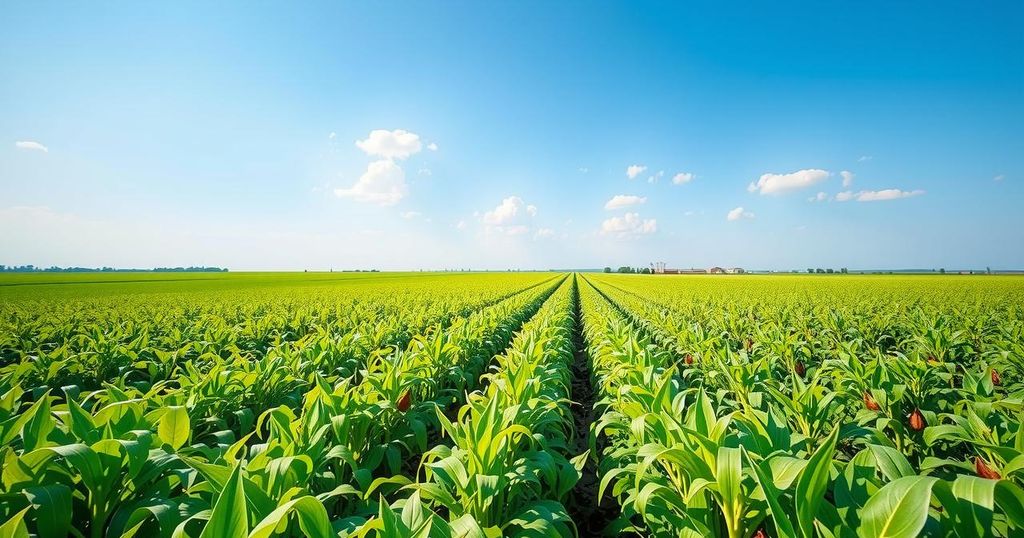Urgent Research Investment Required to Protect U.S. Agriculture Against Climate Change

Research indicates that U.S. agriculture needs a 5-8% annual growth in R&D investment to address productivity challenges posed by climate change. A recent study found that $2.2 billion to $3.8 billion annually could also offset declines. Urgent action is required to secure agricultural sustainability and productivity through effective research initiatives.
Research on United States agriculture indicates that a significant increase in research investment is essential to counteract the effects of climate change and avoid declines in productivity. A recent study published in the Proceedings of the National Academy of Sciences proposes that a yearly growth rate of 5% to 8% in public sector research funding is necessary. Alternatively, a consistent annual investment between $2.2 billion and $3.8 billion would mitigate the slowdown caused by climate change.
The urgency for increased research funding arises from the ongoing impacts of climate change on crop yields. Senior author Ariel Ortiz-Bobea has emphasized the importance of timely investment, noting that the ramifications of climate change could lead to lasting inefficiencies in agricultural productivity if immediate action is not taken. Ortiz-Bobea highlights that agricultural research typically necessitates a significant time commitment before yielding results compared to consumer technology.
The study analyzed 50 years’ worth of data to quantify how higher temperatures have directly affected agricultural outputs. Findings indicate that a rise of 3 degrees Celsius correlates with a productivity decline of over 10%. Ortiz-Bobea and his colleagues also examined the historical returns on agricultural research investments, which underscores the potential for R&D to counteract climate adverse effects and stimulate productivity gains.
Currently, public investment in agricultural R&D is approximately $5 billion, with only marginal annual growth observed since 2000. Ortiz-Bobea advocates for a more significant, sustainable investment strategy that would ultimately lead to a total expenditure of $208 billion to $434 billion by 2050 to secure agricultural viability both now and in the future. He warns against a detrimental trend that prioritizes restrictive public spending, stating, “But decades of research shows that agricultural research has a very high return on investment for the country.”
Publicly funded R&D is crucial, as it produces accessible innovations that do not impose additional financial burdens on farmers. Unlike private sector technologies that often come with increased costs, public initiatives aim at improving agricultural practices with substantial social value. This differential in R&D funding could foster a more sustainable agricultural landscape, as private investment might not align with public needs.
In conclusion, the researchers contend that maintaining agricultural productivity amid climate change demands a resolute commitment to research funding and innovation. Ortiz-Bobea notes, “We’ve done it before, so it’s about the will,” stressing the opportunity to take decisive action for a sustainable agricultural sector that can withstand climate impacts and enhance national food security.
The article underscores the urgent need for increased research funding to safeguard U.S. agriculture against climate change-induced productivity declines. A proposed growth rate of 5% to 8% in public sector R&D investment or a fixed annual investment would ensure that agricultural productivity remains resilient. By emphasizing the benefits of publicly funded research, the study highlights the potential for innovation to support sustainable agricultural practices. Immediate action is imperative to maintain a robust agricultural sector moving forward.
Original Source: www.technologynetworks.com








